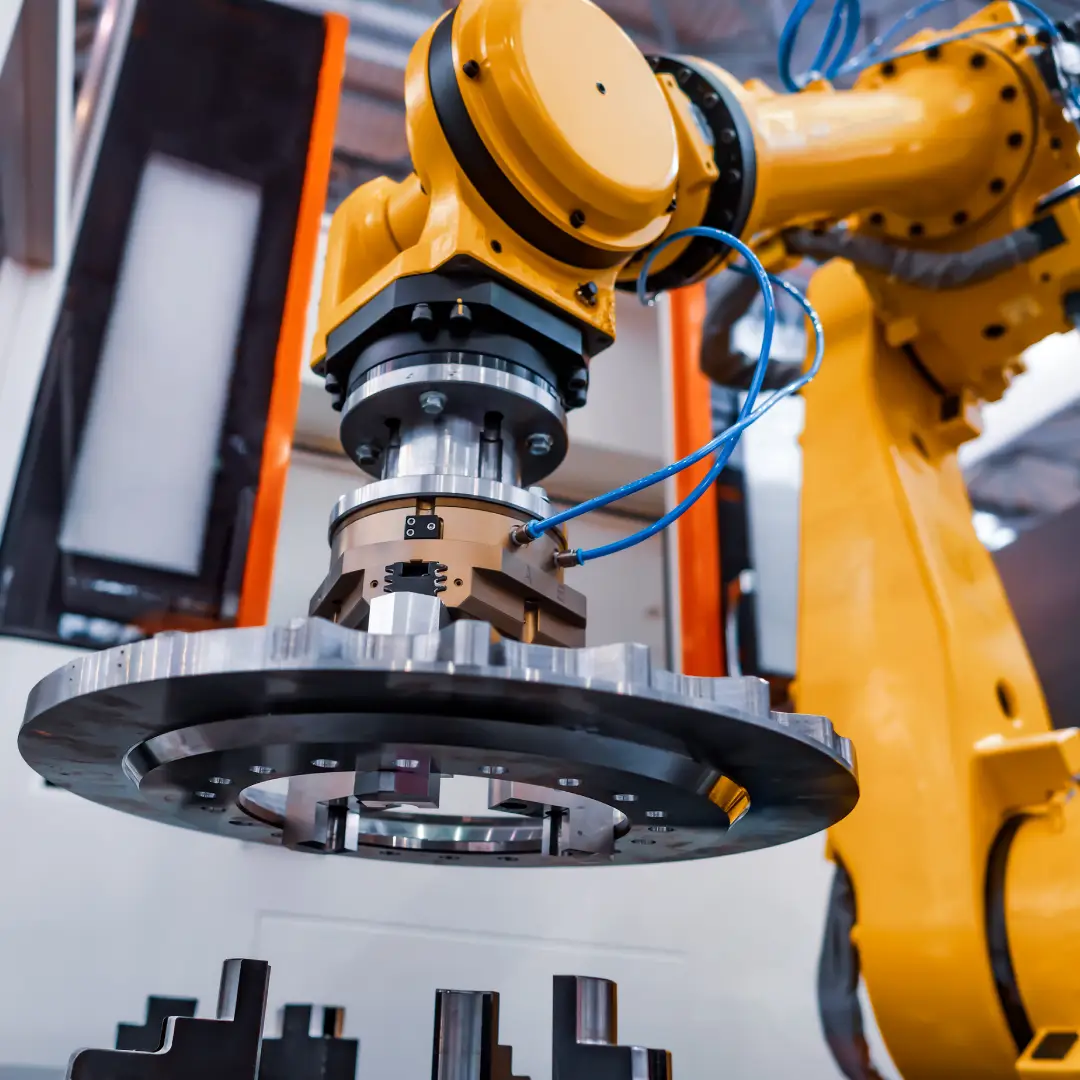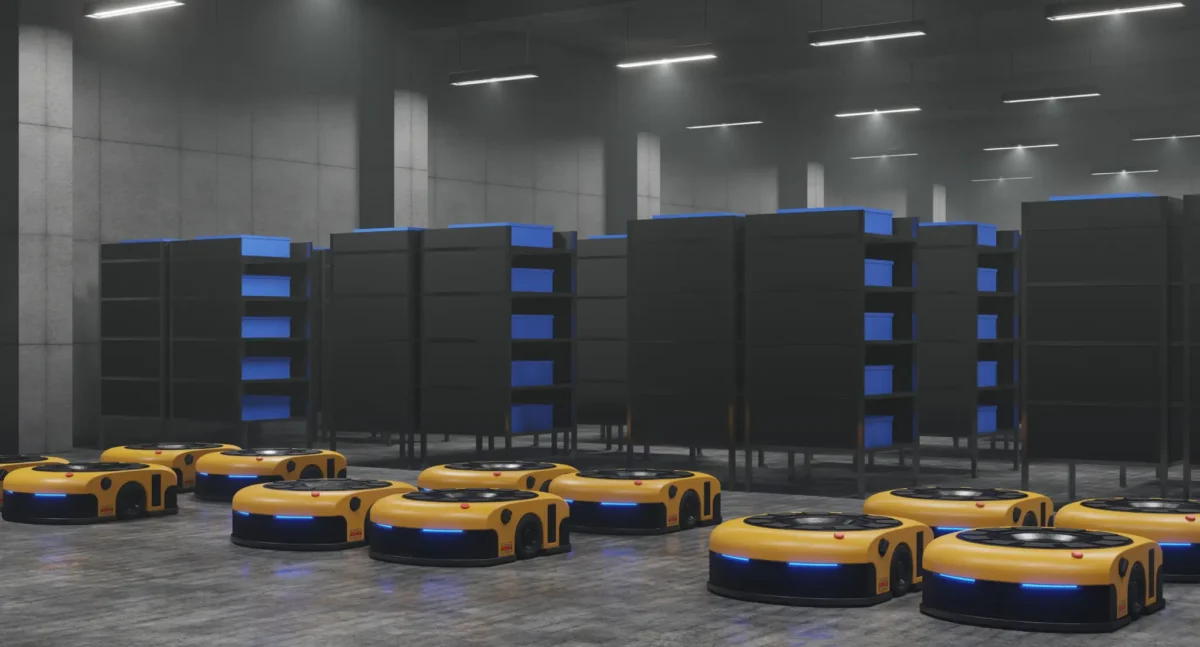Picture a factory floor where a decades-old press hums beside a sensor-laden robotic arm. The manager walks past rows of equipment, some digital, some analog and wonders: “How do I bring all this into the future without losing what already works?”
That question sits at the heart of Industrial Transformation, a shift not just in technology, but in the very DNA of how we design, build, and think about products. It’s no longer about adding more machines or automating a few steps; it’s about reimagining the entire ecosystem that connects data, people, and design.
And this is where Shark Design, a global product design and development company, steps in not with buzzwords or tech hype, but with practical design strategies that help businesses translate transformation into tangible, high-performing products.
So, how can companies navigate this new era and design products that aren’t just relevant today, but indispensable tomorrow?
What Industrial Transformation Really Means – It’s More Than Just Robots

The term Industrial Transformation often brings to mind futuristic factories filled with autonomous machines. But that’s only part of the story. The real transformation is happening at the intersection of the physical and digital worlds, where data, intelligence, and human creativity combine to redefine manufacturing and design.
The Four Pillars of Modern Industrial Transformation
1. Data & Connectivity – The Nervous System
At its core, transformation begins with connectivity. From smart sensors embedded in equipment to cloud connected devices, data has become the new lifeblood of manufacturing.
Imagine a conveyor belt that not only moves products but reports its own wear and tear. Or a lighting system that learns when to dim based on usage. This network of IoT in manufacturing creates real-time visibility and turns every machine, component, and product into a source of insight.
2. Intelligence & Analytics – The Brain
Collecting data is easy. Making sense of it is where the magic happens. Artificial Intelligence (AI) and machine learning analyze this ocean of information to uncover patterns and predict outcomes.
For instance, predictive maintenance algorithms can detect anomalies before a machine fails, reducing downtime and saving costs. But beyond efficiency, this intelligence feeds back into product design, allowing companies like Shark Design to continuously improve performance and usability based on real-world data.
3. Human-Machine Collaboration – The Partnership
Industrial Transformation isn’t about replacing humans, it’s about empowering them. Tools like augmented reality (AR) and virtual reality (VR) are changing how workers train, assemble, and troubleshoot.
A technician wearing AR glasses can see digital overlays guiding assembly steps in real time. Designers can explore 3D prototypes in virtual space before a single part is made. It’s the perfect blend of human intuition and digital precision.
4. Sustainable & Circular Design – The Conscience
Sustainability has moved from optional to essential. As industries face growing pressure to reduce waste and carbon output, sustainable product design has become a cornerstone of transformation.
Circular design thinking, where products are created for reuse, repair, and recycling, ensures longevity and reduces environmental impact. At Shark Design, every project begins with questions like: How will this product live, evolve, and eventually be reborn? That mindset turns sustainability into strategy.
The Ripple Effect – How Transformation Changes the Product Itself
As industries evolve, so too does the very definition of a “product.” What used to be a static object is now a dynamic, connected ecosystem, capable of learning, updating, and communicating long after it leaves the factory floor.
From Static to Dynamic: The Age of Smart Manufacturing
A decade ago, a refrigerator was just a box that kept food cold. Today, it’s a connected device that tracks inventory, suggests recipes, and even orders groceries automatically. This shift from static hardware to intelligent platforms defines smart manufacturing.
Products are no longer one-and-done. They are living systems that evolve through software updates and data feedback loops. This opens doors for new business models like subscription-based upgrades or predictive maintenance services transforming how value is created and sustained.
The Birth of the Digital Twin
One of the most powerful concepts emerging from Industry 4.0 is the digital twin, a virtual replica of a physical product or system that mirrors its real-world behavior.
Before a prototype ever hits the production line, engineers can simulate how it will perform under stress, temperature changes, or user interaction. This dramatically reduces time, cost, and risk.
At Shark Design, the use of digital prototyping and digital twins allows teams to iterate rapidly, validate concepts early, and make smarter design decisions. By testing digitally, they help clients move from concept to market faster, without compromising quality or creativity.
Designing for a Circular Economy
The traditional linear model, make, use, dispose, is no longer sustainable. Modern product development must consider the entire lifecycle from the first sketch.
Designers are now thinking about:
- Material selection: Can it be recycled or sourced sustainably?
- Ease of disassembly: Can components be reused or repaired easily?
- End-of-life strategy: How can the product re-enter the value chain?
By embedding these principles into the product development process, companies future-proof their designs while appealing to increasingly eco-conscious consumers. Shark Design helps clients achieve this by aligning innovation with responsibility where performance meets purpose.
Navigating the Human Hurdles – The Real Challenge of Change
For all the talk of AI and automation, the hardest part of Industrial Transformation isn’t technology, it’s people.
The Skills Gap
As factories and design studios become smarter, the demand for multidisciplinary talent is rising. Engineers now need to understand data analytics. Designers must think digitally. Even executives must adapt to data-driven decision-making.
The problem? The skills gap is real. Many teams struggle to keep up with the pace of change, leading to fragmented workflows and missed opportunities.
That’s why human-centered design is critical. Technology should enhance human capability, not overwhelm it. When Shark Design works with clients, the focus is always on usability creating tools, interfaces, and products that people want to use because they make work easier, not harder.
Cultural Resistance to Change
Transformation often meets resistance not because people dislike innovation, but because they fear disruption.
Change can feel threatening when it challenges long-standing expertise or alters established processes. The key is empathy: involving teams early, showing them the benefits, and designing solutions around their real needs.
At Shark Design, transformation projects start with listening. Whether it’s a production engineer or a C-suite leader, every stakeholder’s perspective helps shape solutions that work in the real world. This human-first approach bridges the gap between technical potential and organizational readiness.
A Blueprint for Action – Integrating Transformation into Your Product Roadmap
It’s one thing to understand Industrial Transformation. It’s another to apply it. Here’s a practical framework that helps organizations bring transformation into their product development process without losing focus or agility.
1. Start with the “Why,” Not the “What”
Every transformation should begin with a purpose. Instead of chasing trends like “Let’s add IoT because everyone else is” start by identifying a real business or user problem.
Ask:
- What pain point are we solving?
- What new value can we deliver?
- How does this align with our brand and sustainability goals?
By anchoring transformation in purpose, companies avoid costly missteps and focus their innovation where it truly matters.
2. Embrace Agile and Iterative Prototyping
The days of long, linear development cycles are over. Transformation demands agility.
Through agile prototyping, teams can test ideas quickly using low-fidelity models both physical and digital and learn from user feedback before scaling up.
At Shark Design, agile development isn’t just a process, it’s a mindset. Rapid iteration allows for flexibility, speed, and creative risk-taking while keeping production costs under control.
3. Design with the Data Loop in Mind
Every connected product generates data. But only when that data feeds back into the design does it become valuable.
Think of a connected fitness device: it tracks user behavior, which informs product updates and future models. The same logic applies to industrial equipment, vehicles, and consumer electronics.
By designing with the data loop in mind, businesses create a virtuous cycle—products improve, users stay engaged, and insights fuel innovation.
4. Build Security and Connectivity In, Don’t Bolt It On
Connectivity introduces risk. Cybersecurity and data privacy must be considered at the very start of design not as last-minute patches.
Smart devices that connect to networks or the cloud must safeguard user trust through robust encryption, secure firmware, and transparent data policies.
At Shark Design, every connected product undergoes security focused prototyping, ensuring innovation never comes at the cost of safety. Transformation only succeeds when users feel both empowered and protected.
Conclusion
Industrial Transformation isn’t a finish line, it’s an evolution. It’s the merging of machines and minds, code and creativity, sustainability and scalability.
The companies that thrive in this era won’t just automate; they’ll reimagine. They’ll design products that are intelligent, sustainable, and human at their core.
At Shark Design, this philosophy drives everything we do from digital twin simulation to agile prototyping and human-centered design. Our mission is simple: to help businesses not just adapt to transformation, but lead it by creating products that define the future of industry.
Ready to translate industrial transformation into your next great product?
Let’s start a conversation.

